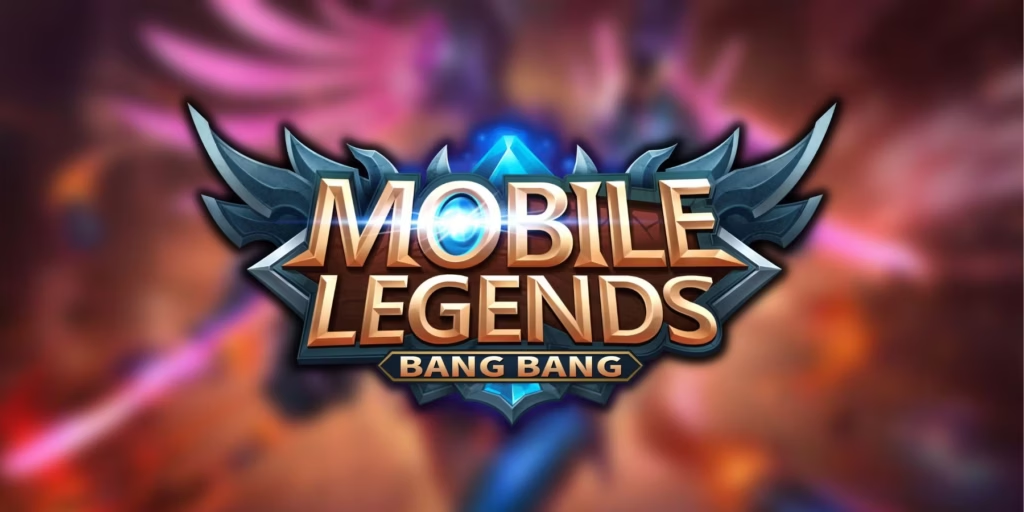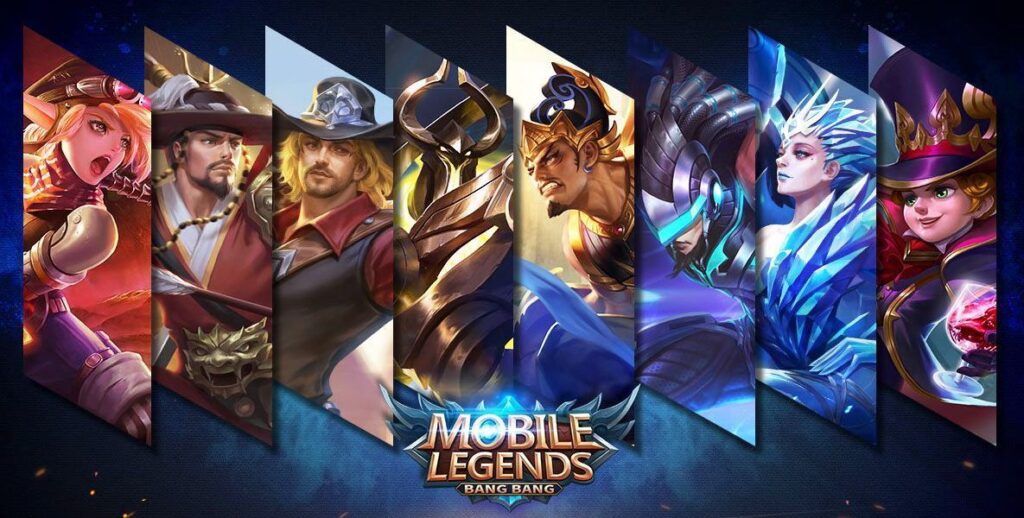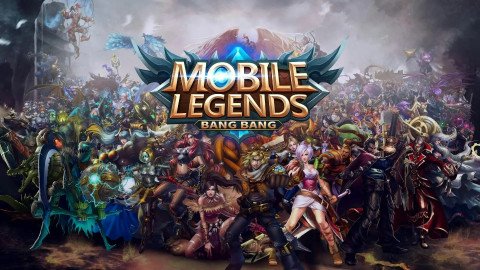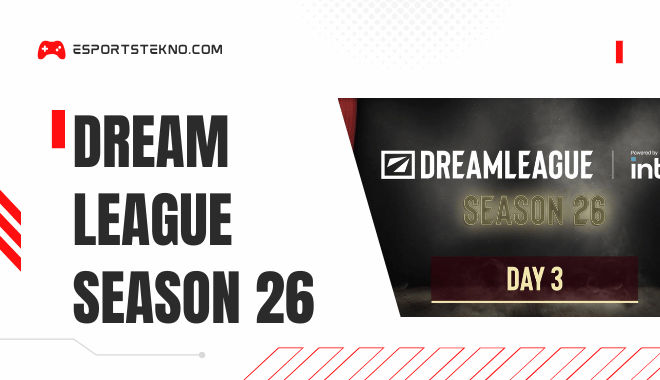In the ever-evolving landscape of mobile gaming, few titles have made as significant an impact as Mobile Legends: Bang Bang (MLBB). As someone who has spent countless hours analyzing gaming trends and following the mobile esports scene, I’ve witnessed firsthand how this game transformed from a simple mobile MOBA to a global phenomenon that has redefined competitive gaming on smartphones.
The meteoric rise of Mobile Legends represents a fascinating case study in how mobile platforms are democratizing esports, bringing competitive gaming to regions previously underserved by PC and console gaming infrastructure. This shift is part of the broader growth mobile gaming trend that’s reshaping the entire esports ecosystem.
In this comprehensive exploration, we’ll dive deep into what makes Mobile Legends tick, from its humble beginnings to its current status as one of the most played mobile games globally. Whether you’re a seasoned player looking to deepen your understanding of the game or a curious observer interested in the mobile gaming revolution, this article aims to provide valuable insights into the MLBB phenomenon.
The Genesis of Mobile Legends: Bang Bang

Mobile Legends: Bang Bang was developed by Shanghai Moonton Technology and officially launched in 2016. The timing couldn’t have been more perfect – smartphone technology had just reached a point where it could handle more complex gaming experiences, and mobile internet infrastructure was improving globally.
What many don’t realize is that Mobile Legends wasn’t the first attempt at bringing the MOBA (Multiplayer Online Battle Arena) experience to mobile devices. Several predecessors had tried with varying degrees of success, but MLBB managed to crack the code by prioritizing accessibility without sacrificing the core strategic elements that make MOBAs engaging.
The developers at Moonton understood something fundamental: mobile gaming needed to accommodate shorter play sessions and less precise controls than PC gaming. They designed MLBB with matches lasting around 10-15 minutes (compared to 30-45 minutes for PC MOBAs like League of Legends or Dota 2) and implemented an intuitive touch control system that felt natural on smartphones.
“We wanted to create a game that anyone could pick up and play, regardless of their previous gaming experience,” explained one of the game’s early developers in a rare interview. “But we also wanted to maintain enough depth that skilled players could continuously improve and showcase their abilities.”
This balance between accessibility and depth became Mobile Legends’ secret weapon. While other mobile MOBAs fell into the trap of oversimplifying gameplay or creating control schemes that felt awkward on touchscreens, MLBB struck a harmonious middle ground that appealed to both casual players and competitive gamers.
Game Mechanics: Familiar Yet Fresh
At its core, Mobile Legends follows the classic MOBA formula: two teams of five players battle to destroy the enemy’s base while defending their own. Each player controls a hero with unique abilities, and teams must work together to secure objectives, farm resources, and ultimately outmaneuver their opponents.
The standard map, like many MOBAs, features three lanes (top, middle, and bottom) connected by a jungle area filled with neutral monsters that provide buffs and resources. Teams must push minion waves down these lanes while contending with enemy heroes and defensive structures.
What sets Mobile Legends apart, however, are the subtle but significant adaptations made for the mobile platform:
Streamlined Resource Management
Unlike PC MOBAs that require last-hitting minions for gold, MLBB implements a more forgiving system where being near dying minions grants gold. This reduces the mechanical skill floor while still rewarding optimal positioning and lane management.
Accelerated Gameplay
The early game phase is significantly shortened, with heroes gaining access to their ultimate abilities much faster than in PC MOBAs. This ensures that even short matches feature exciting team fights and dynamic gameplay rather than extended laning phases.
Intuitive Control Scheme
MLBB’s control system uses a virtual joystick for movement and buttons for abilities that can be quickly tapped or aimed with swipe gestures. The system also includes smart targeting that helps players focus the right enemies without requiring pixel-perfect precision.
Recall and Recovery Mechanics
The game features a quick recall ability that allows players to return to base almost instantly, reducing downtime and keeping players in the action. Additionally, health and mana regenerate more quickly than in PC MOBAs, decreasing the need to return to base frequently.
As someone who has tested countless gaming peripherals for my articles on esports hardware recommendations, I’ve found that Mobile Legends performs admirably across a wide range of devices. The game runs smoothly even on mid-range smartphones, opening competitive play to a much broader audience than PC esports titles that demand expensive hardware.
Hero Roster: Diversity and Accessibility

One of Mobile Legends’ greatest strengths is its diverse and continuously expanding hero roster. As of my latest research, the game features over 100 playable heroes, each with unique abilities and playstyles. These heroes are divided into six primary roles:
- Tank – Durable frontliners who absorb damage and initiate team fights
- Fighter – Versatile heroes who can both deal and absorb significant damage
- Assassin – Mobile damage dealers who excel at eliminating high-priority targets
- Marksman – Ranged physical damage dealers who become extremely powerful in late game
- Mage – Spell-casters who deal burst magic damage and provide utility
- Support – Heroes focused on protecting allies and disrupting enemies
What’s particularly impressive about MLBB’s roster is how it balances accessibility with depth. New players can easily pick up heroes like Layla (marksman) or Tigreal (tank) with straightforward mechanics, while veterans can master complex heroes like Fanny, whose cable-swinging mobility mechanic has one of the highest skill ceilings in mobile gaming.
The game’s business model allows players to permanently purchase heroes with either Battle Points (earned through gameplay) or Diamonds (purchased with real money). Additionally, a rotating selection of free heroes ensures that players can always try different playstyles without financial commitment.
“The diversity of heroes in Mobile Legends creates almost endless strategic possibilities,” notes professional MLBB coach Antonio “Ants” Santos. “Even after thousands of matches, teams are still discovering new combinations and counter-strategies.”
This depth of strategic possibilities has been crucial to the game’s longevity and its success as an esport, creating a meta that continuously evolves without becoming stale.
The Rise of Mobile Legends as an Esport
While Mobile Legends was designed to be accessible to casual players, it quickly demonstrated serious potential as a competitive esport. The game’s first official tournament was held in 2017, just months after its release, but few could have predicted how rapidly the competitive scene would grow.
The turning point came when Mobile Legends was included as a medal event at the 2019 Southeast Asian Games in the Philippines – marking one of the first times a mobile game was featured in a major multi-sport event. This official recognition legitimized MLBB as a serious competitive platform and sparked exponential growth in its esports ecosystem.
Today, the Mobile Legends Professional League (MPL) operates across multiple regions, with the most prominent leagues in Indonesia, Philippines, Malaysia, and Singapore. These regional leagues feed into international tournaments like the M-Series World Championships, which have featured prize pools exceeding $1 million.
The MPL has become a career launchpad for talented players, particularly in Southeast Asia. Top professionals can earn substantial esports player salaries that often exceed the average income in their countries by several times. For example, players in the MPL Philippines reportedly earn between 1,000and
5,000 monthly – significant figures in a country where the average monthly wage is around $300-400.
“Mobile Legends created viable career paths for gamers in regions where PC esports infrastructure was limited,” explains esports analyst Maria Viray. “Players who might never have had access to high-end gaming PCs or stable internet connections could suddenly compete at the highest levels using just their smartphones.”
This accessibility has helped create some of the most passionate esports fan bases in the world. MPL matches in the Philippines and Indonesia regularly attract hundreds of thousands of concurrent viewers, with major tournaments breaking the one million mark. The M2 World Championship in 2021 peaked at over 3 million concurrent viewers – numbers that rival many established PC esports events.
Regional Dominance and Cultural Impact
One of the most fascinating aspects of Mobile Legends’ growth is its regional distribution. Unlike many esports titles that see global adoption, MLBB has found its strongest foothold in Southeast Asia, with Indonesia, Philippines, Malaysia, and Myanmar being particularly enthusiastic adopters.
This regional focus has allowed the game to become deeply embedded in local gaming cultures. In the Philippines, MLBB tournaments are broadcast on national television, professional players become household names, and the game has penetrated popular culture to an extent rarely seen with video games in Western markets.
The reasons for this regional dominance are multifaceted:
- Mobile-First Internet Adoption – Many Southeast Asian countries experienced internet adoption primarily through smartphones rather than PCs, making mobile gaming the default gaming experience.
- Economic Accessibility – The free-to-play model and ability to run on affordable smartphones made MLBB accessible in regions where expensive gaming PCs were out of reach for many.
- Cultural Relevance – Moonton has been strategic about incorporating culturally relevant content, including heroes inspired by Southeast Asian mythology and special events tied to regional holidays.
- Community Building – Local tournaments, from small neighborhood competitions to major city events, helped build grassroots communities around the game.
This regional success has created interesting dynamics in international competitions. Teams from Indonesia and the Philippines have historically dominated global tournaments, with organizations like EVOS Legends, Blacklist International, and Bren Esports becoming some of the most successful top esports teams in the MLBB competitive scene.
However, we’re now seeing increased competitive participation from regions like North America, Brazil, Turkey, and the Middle East as the game continues to expand globally. This growing international competition is creating a more diverse competitive ecosystem that strengthens MLBB’s position in the global esports landscape.
Educational Impact and Career Pathways

An often overlooked aspect of Mobile Legends’ impact is its educational and career development implications. As the game has grown in popularity, it has created entirely new career ecosystems beyond just professional players.
MLBB content creators, coaches, analysts, shoutcasters, tournament organizers, and team managers have all found viable career paths through the game. Universities in countries like the Philippines and Indonesia have even begun offering esports scholarships specifically for Mobile Legends players, recognizing both the competitive skill involved and the career opportunities the ecosystem presents.
“Mobile Legends has created an entire industry of supporting roles,” explains Dr. Mariano Lao, who researches esports education in Southeast Asia. “Students who may not have the reflexes to become pro players can still pursue careers in team management, event production, or content creation within the MLBB ecosystem.”
This educational legitimization represents a significant shift in how mobile gaming is perceived. What was once dismissed as a casual pastime is now recognized as a complex competitive activity that develops valuable skills like strategic thinking, team coordination, and performance under pressure.
Several universities now include Mobile Legends in their varsity esports programs, with dedicated coaches and training facilities. These programs often combine competitive play with academic coursework in areas like sports management, digital marketing, or game design, creating well-rounded educational experiences that prepare students for careers in the growing esports industry.
Technical Evolution and Game Development
From a technical perspective, Mobile Legends’ evolution since its 2016 launch has been remarkable. The game has undergone numerous engine updates, graphical overhauls, and performance optimizations to keep pace with advancing mobile technology.
The most significant technical upgrade came in 2020 with “Project NEXT,” a comprehensive initiative to modernize the game’s visuals, hero mechanics, and user interface. This update represented Moonton’s commitment to keeping MLBB competitive in an increasingly crowded mobile MOBA market, particularly as League of Legends: Wild Rift entered the scene.
What’s particularly impressive about Mobile Legends’ technical evolution is how the developers have maintained backward compatibility with older devices. While the game now features advanced lighting effects, detailed character models, and complex particle systems for players with flagship devices, it still runs acceptably on budget smartphones from several generations back.
This technical inclusivity has been crucial to maintaining the game’s broad player base, especially in regions where many players cannot afford to upgrade their devices frequently. It’s a stark contrast to the approach taken by games like Call of Duty Esports, which typically require recent hardware to run competitively.
Beyond technical improvements, Moonton has demonstrated remarkable responsiveness to community feedback. The game receives regular balance patches, often on a bi-weekly basis, addressing hero power levels and gameplay mechanics based on both professional play patterns and community concerns.
“Few developers maintain the level of communication and responsiveness that we see from Moonton,” notes game design analyst Harith Ibrahim. “They’ve created a feedback loop where player concerns are regularly addressed, creating a sense of partnership between developers and community that keeps players engaged long-term.”
Controversies and Challenges
Despite its success, Mobile Legends has faced its share of controversies and challenges. The most significant came in 2017 when Riot Games, the developer of League of Legends, filed a lawsuit against Moonton for copyright infringement, alleging that MLBB copied substantial elements from League of Legends.
The lawsuit was initially dismissed in the United States but was later successful in China, resulting in Moonton being ordered to pay Riot’s parent company Tencent approximately $2.9 million in damages. This legal battle prompted significant changes to Mobile Legends’ visual design, user interface, and certain character abilities to further differentiate it from League of Legends.
Beyond legal challenges, MLBB has faced ongoing issues with account security, inappropriate player behavior, and match-fixing scandals in its professional scene. In 2020, several professional players were banned after being implicated in match-fixing arrangements, highlighting the growing pains that many emerging esports face as they professionalize.
The game has also received criticism for its monetization practices, particularly its “gacha” or loot box systems for cosmetic items. These randomized reward systems have come under scrutiny in many countries for their similarity to gambling mechanics, especially given the game’s popularity among younger players.
Moonton has taken steps to address many of these concerns, implementing stricter security measures, more robust player behavior systems, and more transparent monetization options. However, these challenges illustrate the complex responsibilities that come with operating a game that has become a cultural phenomenon and economic platform for millions of players.
The Future of Mobile Legends
As we look toward the future, Mobile Legends appears positioned for continued growth, albeit with new challenges on the horizon. The mobile MOBA space has become increasingly competitive, with titles like League of Legends: Wild Rift, Honor of Kings (Arena of Valor), and Marvel Super War all vying for player attention.
Moonton’s 2021 acquisition by ByteDance (the parent company of TikTok) for a reported $4 billion signals strong confidence in the game’s future prospects. This partnership provides Mobile Legends with access to ByteDance’s massive global user base and technological resources, potentially accelerating its expansion into new markets.
Several key trends are likely to shape Mobile Legends’ evolution in the coming years:
- Increased Global Expansion – While Southeast Asia remains the game’s stronghold, Moonton is making concerted efforts to grow in Latin America, the Middle East, and North America through localized marketing and esports initiatives.
- Enhanced Spectator Experience – As esports viewership continues to grow, expect more advanced spectator tools, augmented reality presentations, and interactive viewing experiences similar to what we’ve seen develop in the Fortnite esports wiki community.
- Cross-Platform Possibilities – While currently mobile-only, industry rumors suggest Moonton is exploring versions of MLBB for other platforms, potentially including console or PC releases to expand its reach.
- Advanced Training and Analytics – As the competitive scene matures, expect more sophisticated training tools, replay analysis features, and performance metrics for both amateur and professional players.
- Expanded Universe Content – Following the success of gaming franchises like League of Legends in expanding to animation and other media, Moonton has already begun developing animated shorts and has expressed interest in more extensive narrative content based in the MLBB universe.
“Mobile Legends has proven that mobile esports can achieve scale and cultural relevance comparable to traditional PC titles,” notes esports business consultant Dina Wijaya. “The next challenge is maintaining that momentum while expanding beyond its core markets and continuing to innovate in a rapidly evolving industry.”
Conclusion: More Than Just a Game
As my extensive research and personal experience with Mobile Legends: Bang Bang has shown, this is far more than just another mobile game – it’s a cultural phenomenon that has redefined what’s possible in mobile gaming and created new economic and social ecosystems across multiple countries.
The game’s significance extends beyond entertainment, serving as a case study in how thoughtful design adaptations can successfully translate complex gaming experiences to mobile platforms. It demonstrates how esports can develop in regions previously underserved by traditional gaming infrastructure, creating new opportunities for players, content creators, and supporting industries.
For aspiring mobile esports professionals, MLBB offers valuable lessons about the importance of community building, regional cultural relevance, and technical inclusivity. The game’s evolution from a simple mobile MOBA to a global esports phenomenon illustrates how quickly the gaming landscape can transform in the digital age.
As mobile technology continues to advance and internet infrastructure improves globally, Mobile Legends is likely to remain at the forefront of mobile esports, continuing to bridge the gap between casual mobile gaming and professional competitive play. Its journey represents just the beginning of what promises to be a revolutionary era for mobile gaming and esports as a whole.
Whether you’re a dedicated player, an esports enthusiast, or simply someone interested in digital culture, Mobile Legends: Bang Bang deserves recognition as one of the most influential mobile games of our time – a true pioneer that has forever changed how we think about competitive gaming on smartphones.
Daffa Nur Rafie Alam is a passionate gaming enthusiast and technology aficionado dedicated to exploring the dynamic intersection of esports, gaming, and innovation. With a keen eye for emerging trends and a deep understanding of the gaming landscape, he provides insightful analysis and engaging content for both casual gamers and industry professionals. As a contributor to Esportstekno.com, Daffa ensures that readers receive reliable information that enhances their understanding of the ever-evolving world of esports.
Daffa Nur Rafie Alam is a passionate gaming enthusiast and technology aficionado dedicated to exploring the dynamic intersection of esports, gaming, and innovation. With a keen eye for emerging trends and a deep understanding of the gaming landscape, he provides insightful analysis and engaging content for both casual gamers and industry professionals. As a contributor to Esportstekno.com, Daffa ensures that readers receive reliable information that enhances their understanding of the ever-evolving world of esports. Join him on this exciting journey as he shares valuable insights and fosters a community of like-minded individuals passionate about the innovations shaping the gaming industry.
 eSportsTekno Your Gateway to the Future of Gaming and Innovation
eSportsTekno Your Gateway to the Future of Gaming and Innovation
